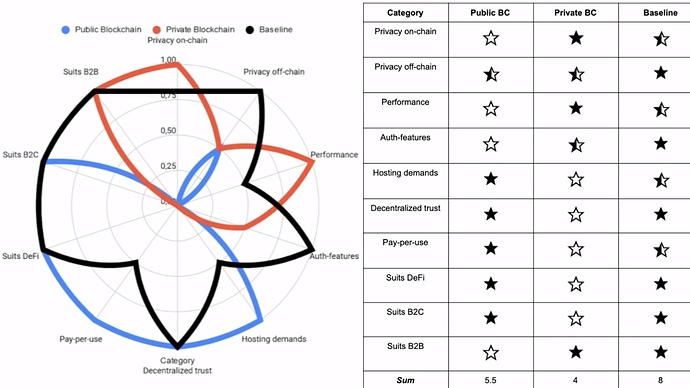Baseline Protocol
Dear CEO,
I’ve been reflecting on the recent board meeting. We were all encouraged by the third-quarter revenue numbers and the improving forecast for the year. The stabilization of our gross margin, despite the price cuts, speaks well of your latest cost reduction initiatives. On the whole, I think we can safely assume we’ve weathered the current storm. However, while we can all be grateful for the recent signs of an upturn in our performance, I suspect the next year or two will hold many challenges.
In the last several years, a lot of companies have been playing around with blockchain – from small niche startups to giant corporations. When it comes to enterprises, blockchain has been met with skepticism, and maybe rightfully so. Companies have been hesitant to introduce blockchain to their operations – they risk leaking sensitive data, require sophisticated setup, and require joining a common network, to even yield the first meaningful results. Although quite a lot of privacy and user experience advancements, blockchain is still a hard sell to the enterprise.
The Baseline Protocol is an open-source initiative that combines the power of cryptography, peer-to-peer networking, and DLT in order to allow enterprises to deliver secure and private business processes at a low cost. The devil is in the details though, so in this article, we will clear out the following aspects of The Baseline Protocol:
WHAT IS BASELINE PROTOCOL
The Baseline Protocol is an open-source initiative aimed at the synchronization of private business processes, like document exchange, via a public blockchain. It leverages cryptography techniques like zero-knowledge proofs and signatures, peer-to-peer messaging protocols, and the blockchain to achieve its goals.
On one hand, it is designed with confidentiality, privacy, and data security in mind. The mixture of technologies is aligned in such a way that none of your sensitive data is leaked. This data stays safely with you and your counter-parties. Outsiders looking in will not know what process is being executed, who are the actors, or what goods are exchanged.
On the other hand, the protocol is designed with complex interactions in mind. Inter-company business processes involve many stops and checks and are never straightforward. The protocol will allow you to describe and accommodate your business process however complex it is.
The Baseline protocol uses an always-on public blockchain network (currently Ethereum main net) to keep the parties synchronized and following the rules. Through the use of cryptography, the sensitive data never leaves your internal storage place, while both sides are guaranteed to follow the rules through the use of zero-knowledge proofs. The data exchange only happens in an encrypted peer-to-peer manner on a need-to-know basis. This way, The Baseline Protocol allows you to have the security of your data while still being sure that all the parties involved in the process are always in sync
The Baseline Protocol can be split into several distinct phases.
The first phase is a peer-to-peer exchange of documents. In this phase, the parties interacting secretly exchange the documents that will govern their further work. In the Radish34 use case, these are the RFQ and Proposal.
The second phase is called “Baselining a document”. In this phase, a proof is generated that the business process was followed and is sent to the blockchain. In order for this information to be private, the terms of the business process are written into a zero-knowledge cryptographical construct called a circuit. Imagine the circuit as the process definition in code.
When a document is being baselined, a zero-knowledge proof is generated and fed into the business process circuit. The zero-knowledge proof gives away no data, but through the circuit, one can be sure that the business process rules were followed.
In the case of agreeing on a contract, the business process rules are simple – “have the two parties signed.” Software developers can design much more complex rules and circuits accommodating for more complex scenarios. If the proof successfully passes all the checks, it is stored on the blockchain as an immutable reference point between the two companies.
In short we need to upgrade, and I definitely feel the time is now ripe for our company to push ahead of our competitors by utilising Baseline Protocol in our business model.
I am excited to discuss this with you in more detail and look at the way we can integrate this protocol.
With warm regards,
J tzong

